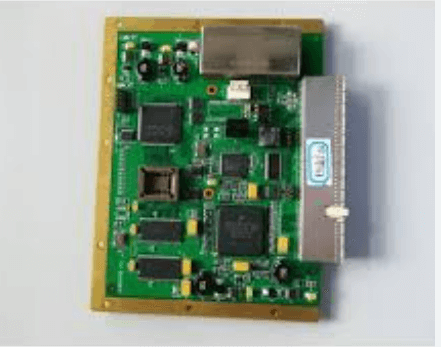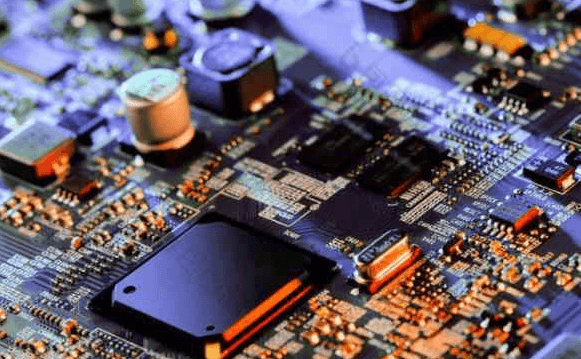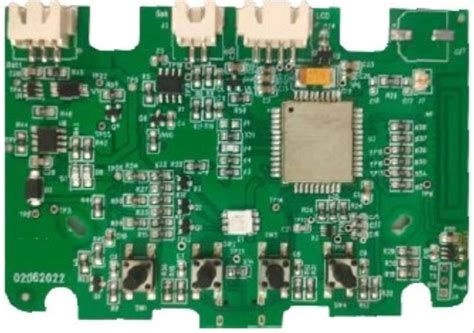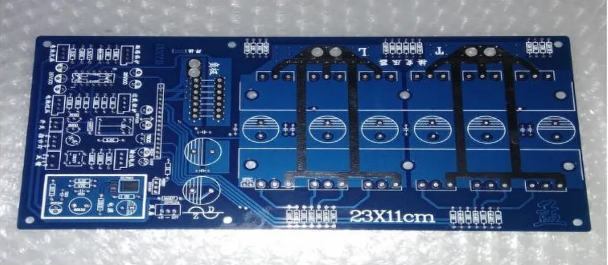Rogers rt5880 pcb board
Advantages Of Using Rogers RT5880 PCB Board In High-Frequency Applications
The Rogers RT5880 PCB board is a highly regarded material in the realm of high-frequency applications, offering a multitude of advantages that make it a preferred choice among engineers and designers.
One of the primary benefits of using Rogers RT5880 is its exceptional dielectric constant stability.
This stability is crucial for maintaining consistent signal integrity, especially in high-frequency circuits where even minor variations can lead to significant performance degradation. The dielectric constant of Rogers RT5880 remains stable across a wide range of frequencies, ensuring reliable and predictable behavior in demanding applications.
In addition to dielectric constant stability, the Rogers RT5880 PCB board exhibits remarkably low dielectric loss.
This characteristic is particularly important in high-frequency applications, as it minimizes signal attenuation and power loss. The low dielectric loss of Rogers RT5880 translates to higher efficiency and better overall performance of the electronic device. Consequently, this material is often employed in applications such as microwave circuits, RF components, and satellite communication systems, where signal integrity and efficiency are paramount.
Another significant advantage of Rogers RT5880 is its excellent thermal management properties.
High-frequency applications often generate substantial amounts of heat, which can adversely affect the performance and longevity of electronic components. The Rogers RT5880 PCB board has a low coefficient of thermal expansion (CTE), which ensures dimensional stability under varying thermal conditions. This property helps in maintaining the integrity of the circuit layout and prevents issues such as delamination and warping, which can compromise the functionality of the PCB.
Moreover, the Rogers RT5880 PCB board is known for its superior mechanical properties.
It offers high tensile strength and durability, making it suitable for use in environments that demand robust and reliable performance. The material’s resistance to moisture absorption further enhances its reliability, as it prevents the degradation of electrical properties that can occur due to humidity. This makes Rogers RT5880 an ideal choice for applications in harsh and demanding environments, including aerospace and military systems.
Furthermore, the ease of fabrication associated with Rogers RT5880 is another noteworthy advantage.
The material can be processed using standard PCB manufacturing techniques, which simplifies the production process and reduces costs. Its compatibility with various plating and etching processes ensures that complex circuit designs can be realized without compromising on quality or performance. This ease of fabrication, combined with the material’s outstanding electrical and mechanical properties, makes Rogers RT5880 a versatile and cost-effective solution for high-frequency applications.
In conclusion, the Rogers RT5880 PCB board offers a range of advantages that make it an excellent choice for high-frequency applications. Its stable dielectric constant, low dielectric loss, superior thermal management, and robust mechanical properties contribute to its exceptional performance and reliability. Additionally, the ease of fabrication further enhances its appeal, making it a preferred material for engineers and designers working on advanced electronic systems. As high-frequency applications continue to evolve and demand higher performance, the Rogers RT5880 PCB board stands out as a reliable and efficient solution that meets the stringent requirements of modern technology.

Design Tips For Optimizing Performance With Rogers RT5880 PCB Board
When designing with Rogers RT5880 PCB boards, optimizing performance requires a meticulous approach to ensure that the unique properties of this high-frequency laminate are fully leveraged. The RT5880 material is renowned for its low dielectric constant and minimal loss tangent, making it an ideal choice for high-speed and high-frequency applications. However, to maximize its potential, several design considerations must be taken into account.
Firstly, understanding the material properties of Rogers RT5880 is crucial.
This laminate features a dielectric constant of 2.2, which remains stable across a wide frequency range. This stability is essential for maintaining signal integrity in high-frequency circuits. Additionally, the low loss tangent of 0.0009 at 10 GHz minimizes signal attenuation, which is particularly beneficial for applications such as RF and microwave circuits. With these properties in mind, designers should prioritize maintaining the integrity of the signal paths.
One of the primary design tips is to carefully manage the impedance of the transmission lines.
Impedance control is vital for minimizing signal reflections and ensuring efficient signal transmission. To achieve this, designers should use precise calculations and simulations to determine the appropriate trace width and spacing. Tools such as electromagnetic field solvers can be invaluable in this process, providing accurate predictions of the impedance characteristics. Furthermore, maintaining consistent trace geometry throughout the PCB layout helps in achieving uniform impedance.
Another critical aspect is the choice of substrate thickness.
The thickness of the Rogers RT5880 laminate can significantly impact the performance of the PCB. Thinner substrates are generally preferred for high-frequency applications as they reduce the propagation delay and minimize the potential for signal distortion. However, the mechanical stability of the board must also be considered, especially for larger PCBs. Balancing these factors requires a thorough understanding of the application’s specific requirements and constraints.
In addition to substrate thickness, the surface finish of the PCB plays a pivotal role in performance optimization.
Surface finishes such as Electroless Nickel Immersion Gold (ENIG) or immersion silver are commonly used with Rogers RT5880 boards due to their excellent conductivity and reliability. These finishes help in maintaining low contact resistance and ensuring robust signal transmission. However, it is essential to avoid finishes that may introduce significant losses or degrade over time, as this can adversely affect the board’s performance.
Thermal management is another crucial consideration when designing with Rogers RT5880.
Although the material has excellent thermal stability, high-frequency circuits can generate significant heat, which must be effectively dissipated to prevent performance degradation. Incorporating thermal vias, heat sinks, and appropriate copper thickness can aid in managing the thermal load. Additionally, ensuring adequate ventilation and considering the thermal properties of other materials used in the PCB stack-up can further enhance thermal performance.
Lastly, attention to detail in the manufacturing process is paramount.
The precision required for high-frequency PCBs necessitates close collaboration with experienced fabricators who are familiar with Rogers RT5880. Ensuring tight tolerances, clean etching processes, and proper handling of the material can prevent defects that might compromise the board’s performance. Regular communication with the fabricator can also help in addressing any potential issues early in the design phase.
In conclusion, optimizing performance with Rogers RT5880 PCB boards involves a comprehensive approach that encompasses material properties, impedance control, substrate thickness, surface finish, thermal management, and meticulous manufacturing practices. By carefully considering these factors and employing precise design techniques, designers can fully exploit the advantages of Rogers RT5880, resulting in high-performance, reliable PCBs suitable for demanding high-frequency applications.
Comparing Rogers RT5880 PCB Board To Other High-Frequency Materials
When comparing the Rogers RT5880 PCB board to other high-frequency materials, it is essential to consider several key factors that influence performance, reliability, and overall suitability for specific applications. The Rogers RT5880 is renowned for its exceptional electrical properties, making it a preferred choice in high-frequency and microwave applications. However, understanding how it stacks up against other materials can provide a comprehensive perspective for engineers and designers.
One of the primary attributes of the Rogers RT5880 PCB board is its low dielectric constant (Dk), which is approximately 2.2.
This low Dk is crucial for maintaining signal integrity at high frequencies, as it minimizes signal loss and dispersion. In comparison, other high-frequency materials, such as FR-4, typically have a higher dielectric constant, often around 4.5. This significant difference means that Rogers RT5880 offers superior performance in applications where signal integrity is paramount, such as in RF and microwave circuits.
Moreover, the Rogers RT5880 PCB board exhibits an exceptionally low dissipation factor (Df), typically around 0.0009 at 10 GHz.
This low Df indicates minimal energy loss as the signal propagates through the material, which is particularly beneficial in high-frequency applications where even slight losses can lead to significant performance degradation. In contrast, materials like FR-4 have a higher dissipation factor, which can result in greater signal attenuation and reduced efficiency in high-frequency circuits.
Another critical aspect to consider is thermal stability.
The Rogers RT5880 PCB board demonstrates excellent thermal stability, with a coefficient of thermal expansion (CTE) closely matching that of copper. This compatibility reduces the risk of delamination and mechanical stress during thermal cycling, which is a common concern in high-frequency applications. Other materials, such as PTFE-based laminates, may offer similar electrical properties but often suffer from higher CTE values, leading to potential reliability issues over time.
In addition to electrical and thermal properties, the mechanical robustness of the Rogers RT5880 PCB board is noteworthy.
It offers good dimensional stability and resistance to environmental factors, such as moisture and chemicals. This durability ensures that the board maintains its performance characteristics even in harsh operating conditions. While other high-frequency materials may provide comparable electrical performance, they may not offer the same level of mechanical resilience, making Rogers RT5880 a more reliable choice for demanding applications.
Furthermore, the ease of fabrication is an important consideration when selecting a PCB material.
The Rogers RT5880 PCB board is relatively easy to process using standard PCB manufacturing techniques, which can result in cost savings and shorter production times. In contrast, some high-frequency materials, particularly those based on PTFE, can be more challenging to work with, requiring specialized equipment and processes that can increase manufacturing complexity and costs.
In conclusion, the Rogers RT5880 PCB board stands out among high-frequency materials due to its superior electrical properties, excellent thermal stability, mechanical robustness, and ease of fabrication. While other materials may offer certain advantages in specific areas, the comprehensive performance characteristics of Rogers RT5880 make it a highly attractive option for a wide range of high-frequency and microwave applications. By carefully considering these factors, engineers and designers can make informed decisions that optimize the performance and reliability of their high-frequency circuits.
Manufacturing Challenges And Solutions For Rogers RT5880 PCB Board
The Rogers RT5880 PCB board, renowned for its exceptional performance in high-frequency applications, presents a unique set of manufacturing challenges that require specialized solutions. This high-frequency laminate, composed of PTFE (polytetrafluoroethylene) and reinforced with glass microfibers, is favored for its low dielectric constant and minimal signal loss. However, these very properties that make it desirable also contribute to the complexities encountered during its manufacturing process.
One of the primary challenges in manufacturing Rogers RT5880 PCB boards is the material’s inherent softness and flexibility.
Unlike traditional FR-4 substrates, the RT5880’s PTFE composition can lead to difficulties in maintaining dimensional stability during the fabrication process. This issue is particularly pronounced during the drilling and routing stages, where the material’s tendency to deform can result in imprecise hole sizes and misaligned vias. To mitigate this, manufacturers often employ specialized drilling techniques, such as using undercut drill bits and implementing controlled drilling speeds, to ensure accuracy and consistency.
Another significant challenge is the adhesion of copper to the PTFE substrate.
The non-polar nature of PTFE makes it inherently resistant to bonding with other materials, which can lead to delamination issues during the PCB’s operational life. To address this, surface treatment processes such as plasma etching or sodium etching are employed to modify the PTFE surface, enhancing its adhesion properties. These treatments create a roughened surface that allows for better mechanical interlocking between the copper and the substrate, thereby improving the overall reliability of the PCB.
Thermal management is also a critical concern when working with Rogers RT5880 PCB boards.
The material’s low thermal conductivity can lead to heat buildup, which can adversely affect the performance and longevity of the electronic components. To counteract this, manufacturers often incorporate thermal vias and heat sinks into the PCB design to facilitate efficient heat dissipation. Additionally, careful consideration is given to the placement of high-power components to minimize thermal stress on the board.
The precision required in the etching process for Rogers RT5880 PCB boards cannot be overstated.
Given the high-frequency applications for which these boards are typically used, even minor deviations in the trace width or spacing can result in significant signal integrity issues. Advanced photolithography techniques and tightly controlled etching processes are essential to achieve the necessary precision. Furthermore, regular inspection and quality control measures are implemented to ensure that the final product meets the stringent requirements of high-frequency performance.
In addition to these technical challenges, the cost of materials and the complexity of the manufacturing process can also pose economic challenges.
The specialized equipment and processes required for working with Rogers RT5880 laminates often result in higher production costs compared to standard FR-4 PCBs. However, the superior performance characteristics of RT5880 in high-frequency applications justify the investment, particularly in industries such as aerospace, telecommunications, and advanced radar systems.
In conclusion, while the manufacturing of Rogers RT5880 PCB boards presents a range of challenges, these can be effectively addressed through a combination of advanced techniques and meticulous process control. By understanding and overcoming these challenges, manufacturers can produce high-performance PCBs that meet the demanding requirements of modern high-frequency applications. The solutions implemented not only enhance the reliability and performance of the final product but also pave the way for continued innovation in the field of high-frequency electronics.







